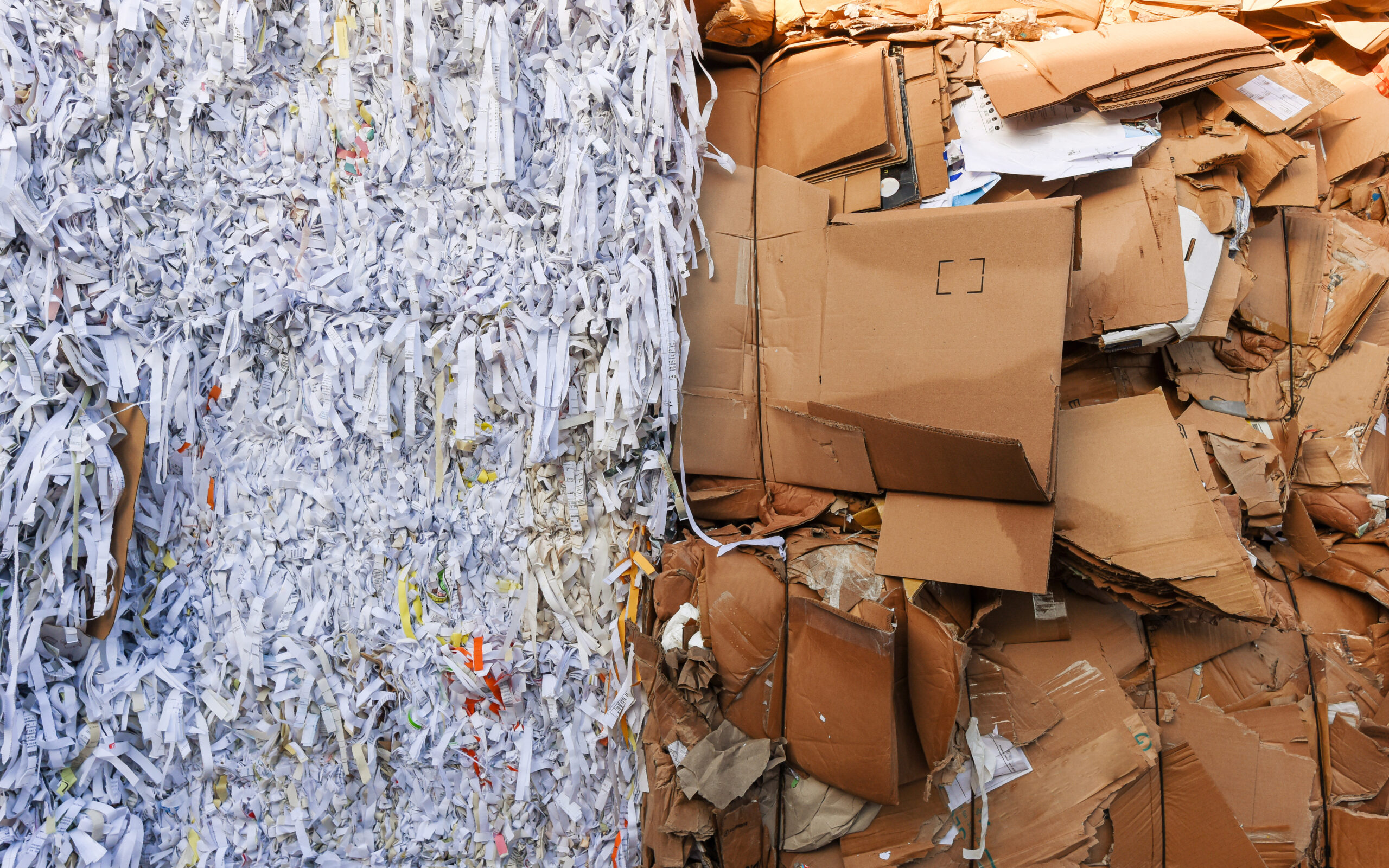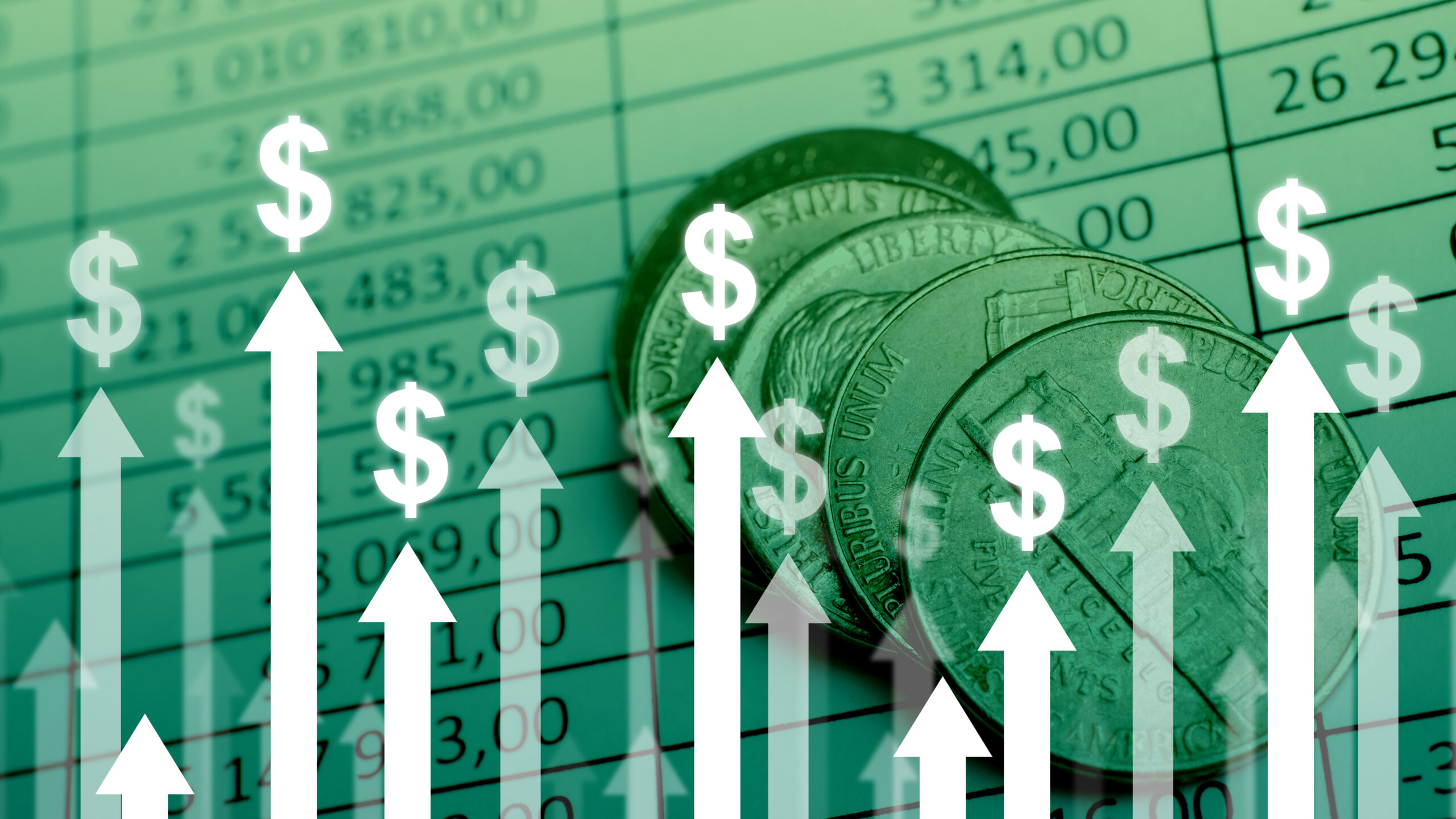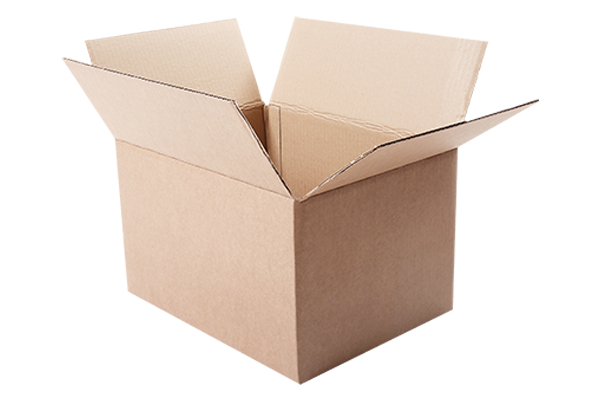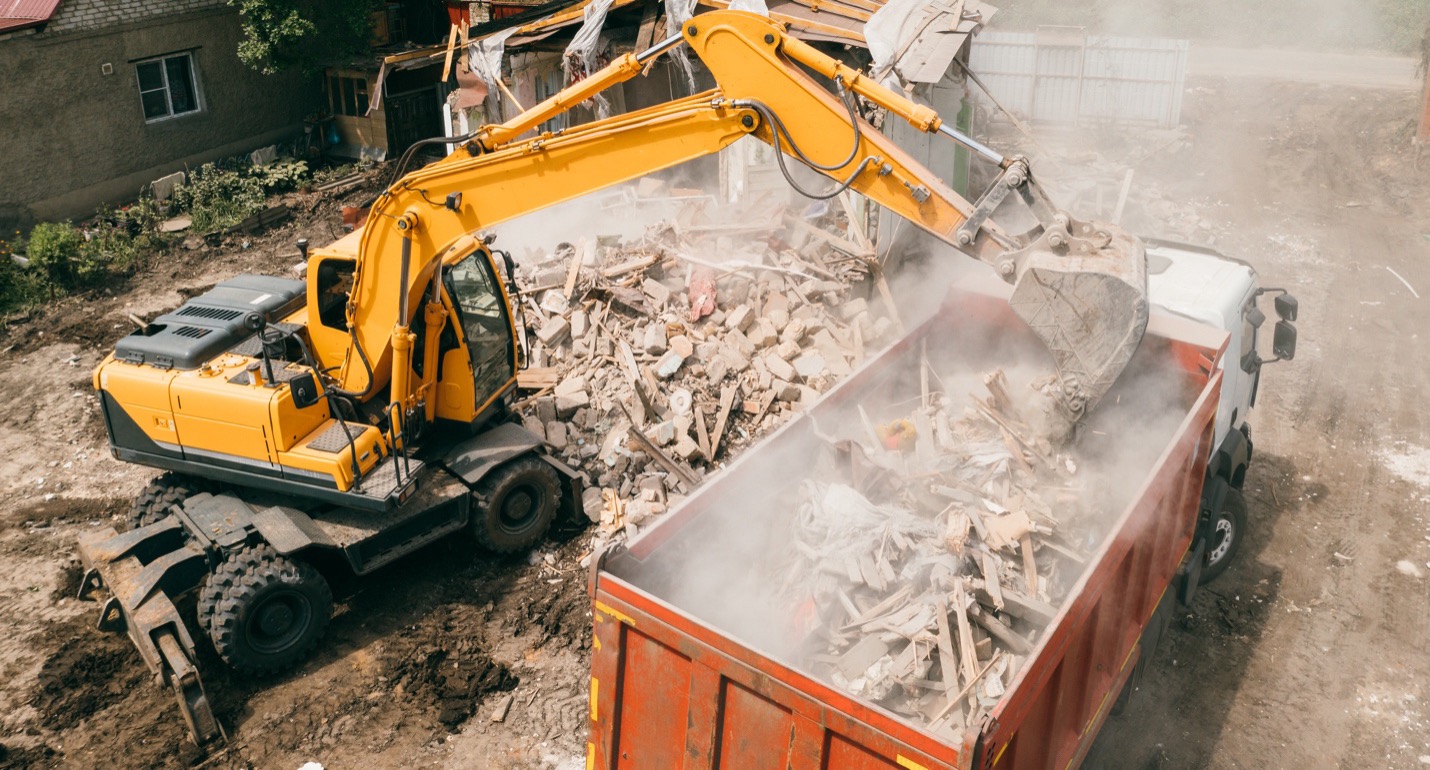FROM TRASH TO TREASURE
 Depending on your point of view paper, card stock and cardboard can either be a nuisance or an opportunity. When talking about paper recycling we need to use the industry terms of non-durable goods (office paper, newspaper, paper cups, etc.). The other primary classification is old corrugated containers (OCC), usually used for shipping and also referred to as durable goods for recycling purposes. Paper goods are one of the most successful recycling stories about re-use of municipal solid waste (MSW). The recycle rates in 2021, the most recent data available, were 68% for papers and 91.4% for OCC. In large part, this is attributable to the fact that about 80% of U.S. paper mills use some recycled material and about one third use 100% recycled material as feedstock to produce post-consumer paper. Paper is unique in that the process for making paper from virgin material is virtually identical to that of processing used material. Once the incoming material has been reduced to a pulp stage it follows roughly the same manufacturing steps regardless of the original source material. All of this is generally good news for the environment, though the demands of a high recycle rate also carry some associated risks.
Depending on your point of view paper, card stock and cardboard can either be a nuisance or an opportunity. When talking about paper recycling we need to use the industry terms of non-durable goods (office paper, newspaper, paper cups, etc.). The other primary classification is old corrugated containers (OCC), usually used for shipping and also referred to as durable goods for recycling purposes. Paper goods are one of the most successful recycling stories about re-use of municipal solid waste (MSW). The recycle rates in 2021, the most recent data available, were 68% for papers and 91.4% for OCC. In large part, this is attributable to the fact that about 80% of U.S. paper mills use some recycled material and about one third use 100% recycled material as feedstock to produce post-consumer paper. Paper is unique in that the process for making paper from virgin material is virtually identical to that of processing used material. Once the incoming material has been reduced to a pulp stage it follows roughly the same manufacturing steps regardless of the original source material. All of this is generally good news for the environment, though the demands of a high recycle rate also carry some associated risks.
RECENT CHANGES IN THE PAPER RECYCLING MARKET
Within the last five years, several factors have combined to drive up the price of the source material for paper and corrugated cardboard.
This process started with the National Sword policy of China in 2018, a mandate by the Chinese government to stop receiving so much of the world’s waste for reprocessing. This was followed, in 2020 by the Covid pandemic which lead to subsequent additional supply chain interruptions. The uncertainty caused by these occurrences increased the risk in the marketplace and caused the cost of paper pulp to steadily rise over the last several years. This is a typical reaction of a market to uncertainty in supply and demand economics.
In addition, global inflation had increased the cost of most goods. Some of the processing chemicals for paper pulp processing had become more expensive, further pushing prices higher.
Energy prices have also been on a roller coaster ride, with high volatility over the last couple of years. Of course it takes fuel to heat the pulping tanks in paper production. And that heat comes mostly from fossil fuels. So the volatility there adds to the risk, uncertainty and cost.
 The key indicator to watch is the producer price index for woodpulp (Ref. link: Woodpulp PPI ) Starting in late 2021 the price had been stable for about a year at an index value of around 140. Then it started to move up as the combined effects of the market were starting to take hold. The PPI started climbing fairly steeply until early 2023 where it topped out at just under 270. Since then it has slowly eased off and is hanging around just above 210 as of this writing.
The key indicator to watch is the producer price index for woodpulp (Ref. link: Woodpulp PPI ) Starting in late 2021 the price had been stable for about a year at an index value of around 140. Then it started to move up as the combined effects of the market were starting to take hold. The PPI started climbing fairly steeply until early 2023 where it topped out at just under 270. Since then it has slowly eased off and is hanging around just above 210 as of this writing.
WHERE TO GO FROM HERE
When prices for woodpulp are high, producers need to charge more for their finished product. But they are in a competitive market and can’t just charge whatever they want. If the price of the raw material doubles, they can’t just double their wholesale prices. So they raise prices a bit to keep their revenue up, and cover part of the additional cost while still staying competitive, but the tradeoff is a reduction in profitability. To recover the lost profitability they pay proportionally less than the going rate to the raw material (woodpulp) suppliers so they can stay profitable. These again are the normal responses to the market forces at play. The good news in this story is that the things that were driving the price of woodpulp up are starting to slack off. There should be enough capacity built up to handle the demand after China stopped taking scrap off of our hands. Inflation appears to be settling down, although paper is a worldwide market and other countries besides the U.S. are still wrestling with inflation. And even though energy prices are notoriously volatile, as more “green” power comes on board, that should help stabilize the price of energy. Hanging in there will pay dividends to those that can afford to continue recycling, even at a reduce value. As the market picks back up again, those that have kept their relationships will be the first to start seeing the benefits. That’s not even including the obvious upside for the environment, while helping to preserve our forest lands.
The size of recycling markets has grown to be quite substantial with something like 90 million tons of paper products recycled or composted annually in the US alone. As noted above, paper mills are already configured to use recycled stock, so the infrastructure support is there. As the pricing pressures ease and the demand becomes more predictable there are many reasons to believe that the market will settle into a range that supports both suppliers and producers.
To learn more about Evergreen Recycling and their recycling and waste management programs visit their web site at: Evergreen Web Site
You can also reach out to them directly through this contact link: Contact Evergreen or give them a call at (817) 293-4400








